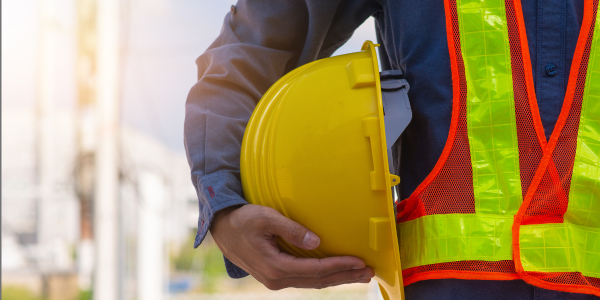Part Three: Understanding OSHA’s Fall Protection Standards

Welcome to the final installment of the three-part series discussing the Occupation Safety and Health Administration’s (“OSHA”) fall protection standards.
At first, we discussed OSHA’s fall protection standards contained within the Code of Federal Regulations. Then, we reviewed the various types of conventional fall protection systems that satisfy OSHA’s fall protection standards. In this Article, we will bring attention to two additional safety hazards where OSHA requires fall protection systems – hoist areas and holes.
1. Hoist Areas. A hoist area is an elevated access opening to a higher walking-working surface used to transport workers, tools, equipment, and materials between floors. Because the hoist areas are usually six feet or more from the lower working surface, employers may consider implementing guardrail systems or personal fall arrest systems.
OSHA Standards applicable to hoist areas:
-
A chain, gate, or removable guardrail section shall be placed across the access opening between guardrail sections when hoisting operations are not taking place. 1926.502(b)(10)
-
Hoist areas must be rigged to allow the movement of the employee only as far as the edge of the walking or working surface. 1926.502(d)(24)
-
Hoisting areas must be connected to the work area by an access path formed by two warning lines. 1926.502(f)(1)(iii)
2. Holes. For purposes of this article, a hole refers to a gap or open space in a floor, roof, or similar surface that is at least 2 inches (5 cm) in its smallest dimension. Be on the lookout for holes on ramps, roofs, and other elevated surfaces.
OSHA Standards applicable to holes:
-
Guardrail systems should be erected on all unprotected sides/edges of the hole. 1926.502(b)(11)
-
When a hole is used for the passage of materials, the hole shall have not more than two sides provided with removable guardrail sections to allow the passage of materials. 1926.502(b)(12)
-
When the hole is not in use, it shall be closed over with a cover, or a guardrail system shall be provided along all unprotected sides or edges. 1926.502(b)(12)
Remember fall protection is generally required when working or walking on a surface six feet or higher than the next walking surface. Protecting your employees from fall hazards should be a team effort. On one hand, the responsibility falls on the employers to determine when and where fall protection is required and to implement proper fall protection training. On the other hand, employees bear the responsibility to use the fall protection systems as trained without taking any shortcuts. With a team mindset, employers and employees can work together to make their workplace safer from fall hazards.
Disclaimer: The information contained in this article is for general educational information only. This information does not constitute legal advice, is not intended to constitute legal advice, nor should it be relied upon as legal advice for your specific factual pattern or situation.
Cotney Construction Law is an advocate for the roofing industry and General Counsel of NRCA. Its attorneys’ practice in all areas of construction law. The firm works extensively on matters relating to OSHA defense, which includes the management and development of safety and health strategies for construction contractors across the United States. The firm’s OSHA practice concentrates on litigation and the appeals of citations involving catastrophic construction related accidents. For more information, please visit www.cotneycl.com.
Contact Cotney Construction Law for additional information.























Comments
Leave a Reply
Have an account? Login to leave a comment!
Sign In